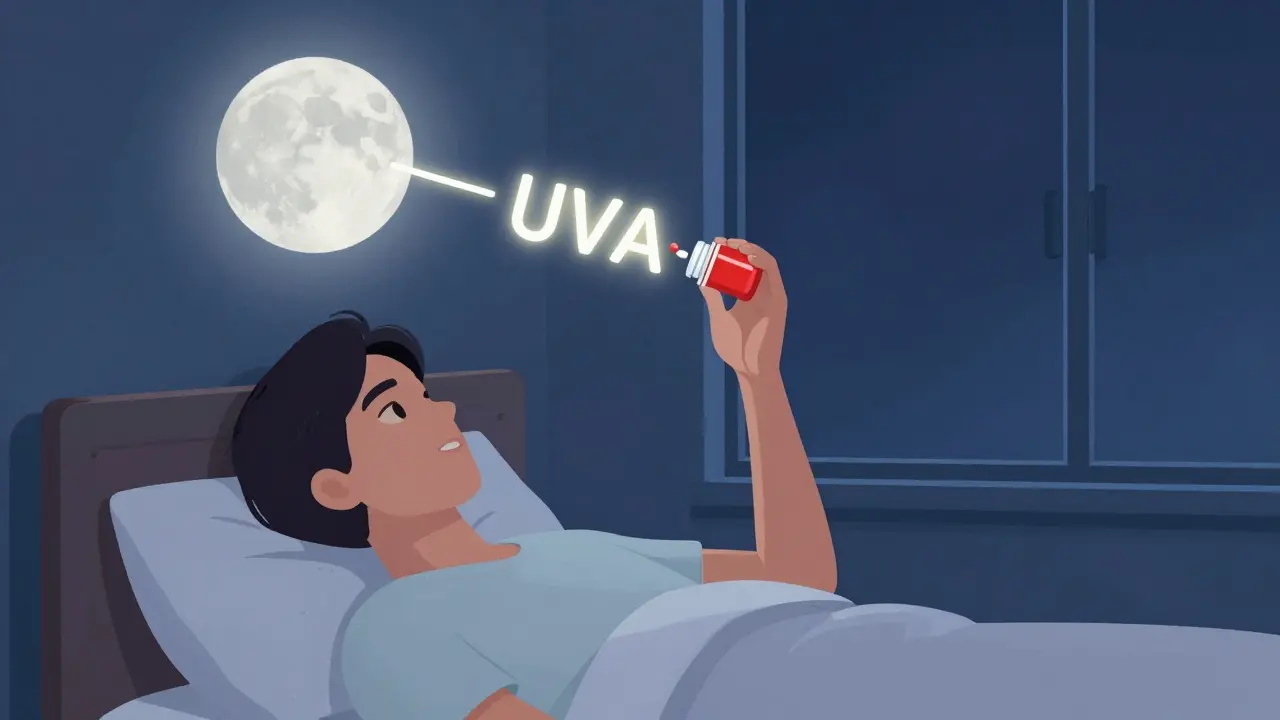Learn how to prevent painful skin reactions caused by antibiotics like doxycycline and ciprofloxacin when exposed to sunlight. Proven steps include evening dosing, SPF 50+ sunscreen, UPF clothing, and avoiding peak sun hours.
Phototoxicity is a skin reaction triggered when certain drugs or chemicals interact with sunlight. Ever noticed a rash, redness, or blistering after taking a medication and spending time in the sun? That’s phototoxicity in action. It's not just about catching a sunburn; this reaction happens because some medications make your skin extra sensitive to UV rays, even on cloudy days.
Common culprits include certain antibiotics, diuretics, and acne treatments like isotretinoin (which you might recognize from accutane). If you’ve recently started a new drug and find your skin reacting unusually to sunlight, pay attention. This isn’t just discomfort; severe phototoxicity can cause deeper skin damage.
Recognizing phototoxicity isn’t too tricky. Symptoms usually pop up within hours of sun exposure and include redness, swelling, itching, and sometimes blister-like eruptions that look worse than a typical sunburn. Unlike allergic reactions, phototoxic reactions depend on sun exposure combined with the drug—it’s a one-two punch. If you haven’t been outside or exposed to UV light, a rash caused by the drug alone is less likely.
Noticing these signs early means you can take action before things get worse. If you suspect phototoxicity, talk to your doctor about your medications and sun exposure habits.
The best way to avoid phototoxicity is prevention. Start by checking if your medications come with sun sensitivity warnings—this info is often in the leaflet or given by your pharmacist. When your drug puts you at risk, simple steps can make a huge difference:
Remember, phototoxicity doesn’t just hit during vacations or beach days—everyday sun exposure counts. Taking these precautions can help you stay comfortable and keep your skin healthy while you complete your treatment.
If you experience severe skin reactions, don’t delay seeing a healthcare professional. In some cases, your medication may need adjusting or changing to avoid ongoing issues.
Phototoxicity is a real but manageable side effect. With the right knowledge and simple protective habits, you can stay safe in the sun without giving up your medications. Always be proactive—your skin will thank you for it.

Learn how to prevent painful skin reactions caused by antibiotics like doxycycline and ciprofloxacin when exposed to sunlight. Proven steps include evening dosing, SPF 50+ sunscreen, UPF clothing, and avoiding peak sun hours.

Minocycline is a commonly prescribed antibiotic used to treat various bacterial infections, from acne to respiratory issues. One of the lesser-known side effects is phototoxicity, where the skin becomes more sensitive to sunlight. Exploring how this reaction occurs, individuals can better manage their exposure to sunlight while taking minocycline. Practical tips and life changes can help reduce the risk of this uncomfortable side effect, ensuring a safe course of treatment. Awareness empowers patients in making informed choices about their health and skincare routines.